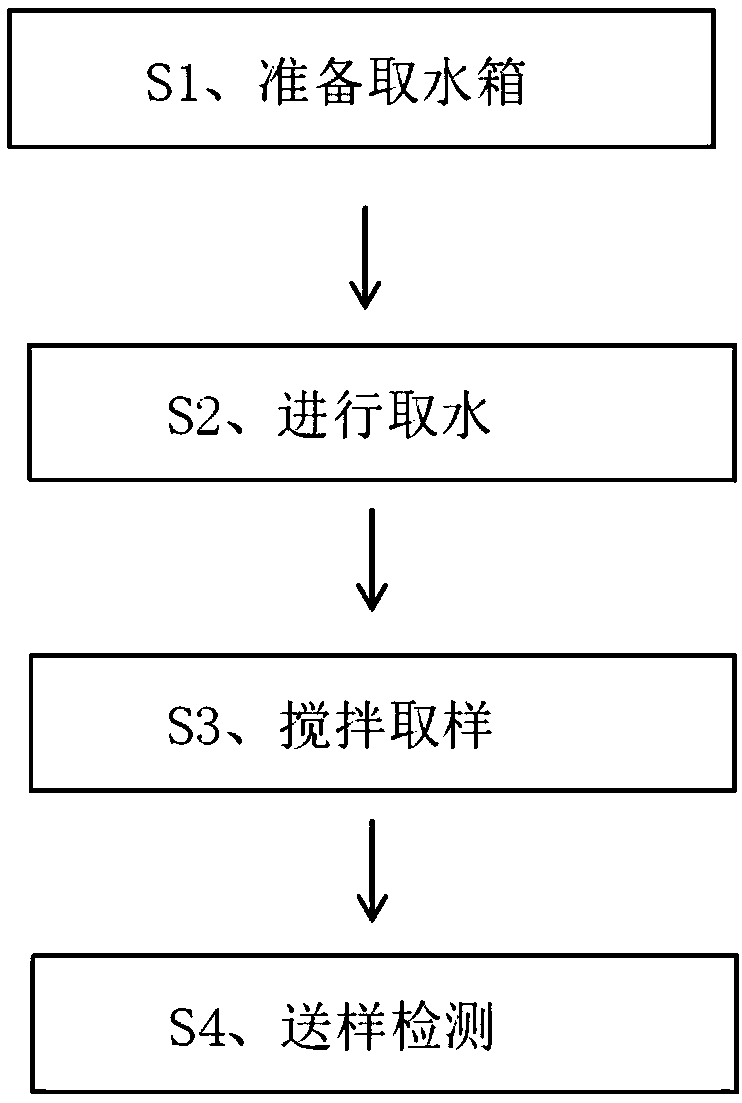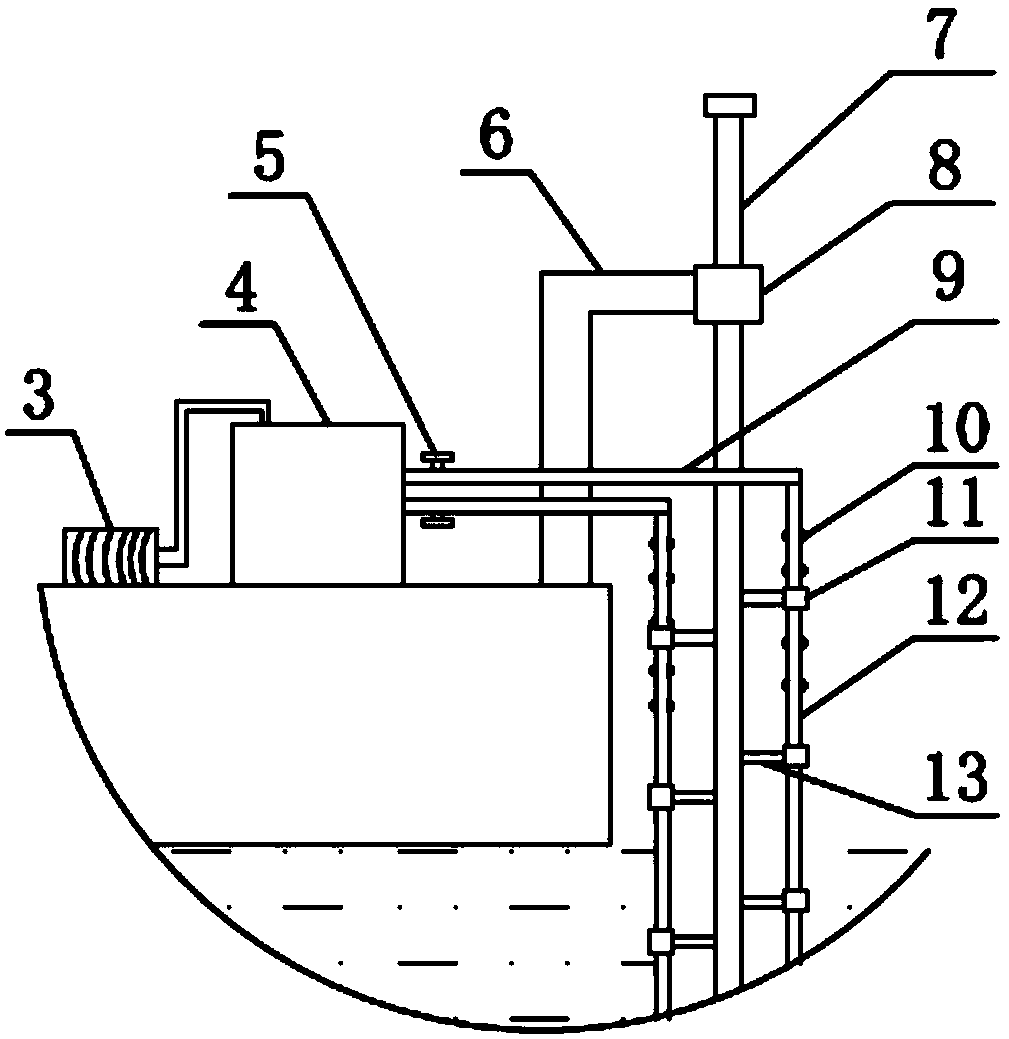Method for monitoring pollution level of sediment-laden river
A pollution degree and river technology, which is applied in the preparation of test samples, measuring devices, color/spectral characteristics measurement, etc., can solve the problems of inaccurate monitoring of river pollution degree, technical problems that cannot be ruled out, and module data distortion. To achieve the effect of convenient and comprehensive sampling, avoiding water sample pollution, and accurate sampling
- Summary
- Abstract
- Description
- Claims
- Application Information
AI Technical Summary
Problems solved by technology
Method used
Image
Examples
Embodiment 1
[0057] like figure 1 Shown, a method for monitoring the degree of pollution of a river with a lot of sediment, the method includes the following steps:
[0058] S1. Prepare the water intake tank: Use the air pump to vacuumize the sealed empty tank to eliminate the influence of air on the river monitoring data;
[0059] S2. Take water: extend the lower end of the pumping pipe to the required depth in the water surface of the river, select different sampling depths, open the first valves in turn, and take water samples;
[0060] S3. Stirring sampling: after the extraction is completed, close the first valve, turn on the stirring motor, after stirring time T, turn off the stirring motor, and then turn off the air pump, so that the return air in the sealed empty box returns to the normal atmospheric pressure state, open the third valve, from Sampling in the sampling tube;
[0061] S4. Sending samples for detection: send the removed water samples to the water quality testing labo...
Embodiment 2
[0067] like figure 1 Shown, a method for monitoring the degree of pollution of a river with a lot of sediment, the method includes the following steps:
[0068] S1. Prepare the water intake tank: Use the air pump to vacuumize the sealed empty tank to eliminate the influence of air on the river monitoring data;
[0069] S2, water intake: extend the lower end of the pumping pipe to the required depth in the water surface of the river, select different sampling depths, open the first valve in turn, and use atmospheric pressure to draw the river water into the sealed empty box to extract water samples;
[0070] S3. Stirring sampling: after the extraction is completed, close the first valve, turn on the stirring motor, after stirring time T, turn off the stirring motor, and then turn off the air pump, so that the return air in the sealed empty box returns to the normal atmospheric pressure state, open the third valve, from Sampling in the sampling tube;
[0071] S4, sample delive...
Embodiment 3
[0084] like figure 1 As shown, a method for monitoring the degree of pollution of a river with a lot of sediment, the method includes the following steps:
[0085] S1. Prepare the water intake tank: Use the air pump to vacuumize the sealed empty tank to eliminate the influence of air on the river monitoring data;
[0086] S2, water intake: extend the lower end of the pumping pipe to the required depth in the water surface of the river, select different sampling depths, open the first valve in turn, and use atmospheric pressure to draw the river water into the sealed empty box to extract water samples;
[0087] S3. Stirring sampling: after the extraction is completed, close the first valve, turn on the stirring motor, after stirring time T, turn off the stirring motor, and then turn off the air pump, so that the return air in the sealed empty box returns to the normal atmospheric pressure state, open the third valve, from Sampling in the sampling tube;
[0088] S4. Sampling t...
PUM
 Login to View More
Login to View More Abstract
Description
Claims
Application Information
 Login to View More
Login to View More - R&D
- Intellectual Property
- Life Sciences
- Materials
- Tech Scout
- Unparalleled Data Quality
- Higher Quality Content
- 60% Fewer Hallucinations
Browse by: Latest US Patents, China's latest patents, Technical Efficacy Thesaurus, Application Domain, Technology Topic, Popular Technical Reports.
© 2025 PatSnap. All rights reserved.Legal|Privacy policy|Modern Slavery Act Transparency Statement|Sitemap|About US| Contact US: help@patsnap.com



